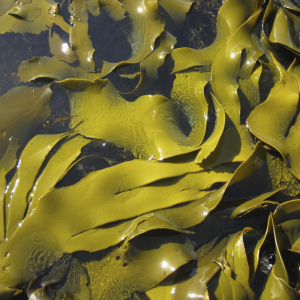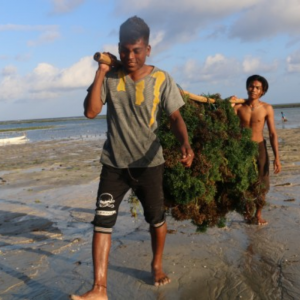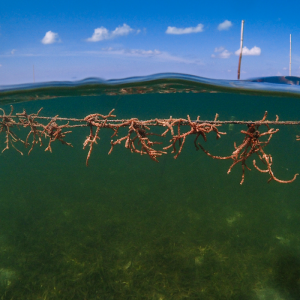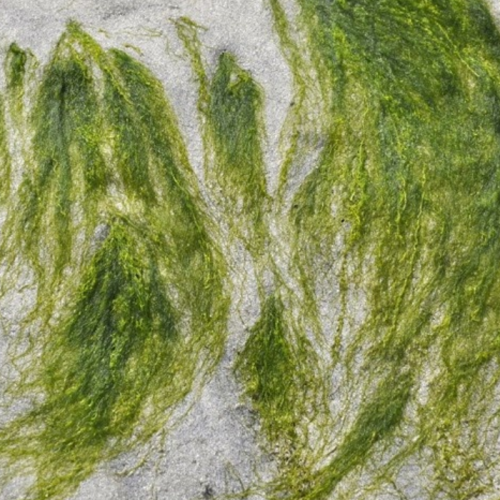
Benefits When Farming Integrated Shrimp Seaweed
| Fri, 08 Nov 2019 - 10:03
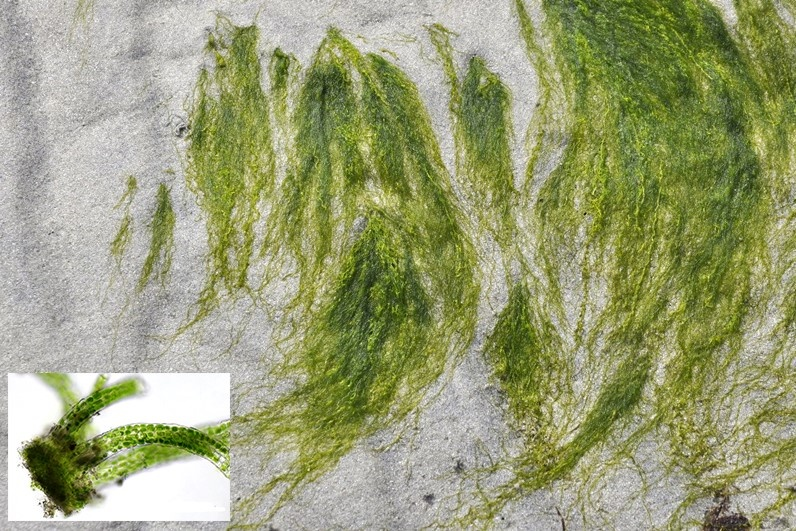
A recent report just published in the Journal of Applied Phycology shows the benefits of the vannamei farming model integrated with blue seaweed in the minimum water exchange aquaculture system.
Application of seaweed ( Ulva prolifera ) in aquaculture
The aquaculture industry has been developing rapidly all over the world, resulting in the consequences of waste water sources that are causing significant impacts on the environment. Recognizing this problem, many new aquaculture methods are being widely used to recycle water while minimizing the amount of waste water discharged into the environment and thereby solving the problem of nitrogen accumulation in the environment. country. One of the solutions that can be assessed as having potential in aquaculture is a model of aquaculture combined with seaweed or algae.
Seaweed Ulva prolifera known for rapid growth, and reproduction of it effectively removes nitrogen quickly. Seaweed Ulva prolifera reported that the powerful can develop in an environment rich in nutrients and able to absorb nutrients efficiently accumulate in the water.
In the study Le Ngoc Hanh and Toshiro Masumoto (2018), published in the 12th issue of the Mekong Journal of Fisheries in 2018, seaweed can be used as a biofilter in combination with the farming system. closed to minimize nitrogen in aquaculture.
The results showed that the addition of seaweed as a biofilter in the culture system effectively reduced the amount of ammonia released from the fish. The research results also show that the optimal density when applying this seaweed in the culture system is 6 g / L or more, which brings high efficiency and significant difference compared to lower densities.
From the results of this study, it was shown that Ulva prolifera can be applied effectively in the circulatory system as a biofilter , and the optimal density to be applied to nutrient uptake. of seaweed is 6 g / L.
Farming integrated white shrimp with seaweed
Integrating seaweed culture in shrimp farming systems is considered a potential aquaculture practice because seaweeds can convert dissolved inorganic nitrogen into biomass and biomass can be easily harvested.
Hong-xing Ge et al. 2019 conducted the study of the effect of integrating green seaweed ( Ulva prolifera ) with Pacific white shrimp (Litopenaeus vannamei) at a stocking density of 500 shrimp / m3 at other water exchange levels. to assess water quality and shrimp growth performance.
Four daily water exchanges were 5% (T1), 10% (T2), 15% (T3) and 20% (T4) with U. prolifera seaweed stocking density of 800 mg / L.
Results: There was no significant difference in total ammonia nitrogen (TAN) concentration between T2 and T3 (P> 0.05) from the beginning to the end of the experiment. And during the experiment the nitrite and nitrate concentrations in all groups were constant and always low. On day 35, there was no significant difference in survival rate of shrimp between groups T2, T3 and T4. There was no significant difference in feed conversion ratio (FCR) in T2 groups, compared to T1, T3 or T4.
This study has demonstrated that Pacific white shrimp culture (500 shrimp / m3) incorporates U. prolifera seaweed (800 mg / L) in culture systems with a 10% water exchange rate that can control quality. water and enhance the growth of shrimp.
From the two studies above, the potential of using U. prolifera seaweed to control water quality in aquaculture through the ability to convert nitrogen and ammonia in water. Therefore the integrated shrimp / fish farming model with seaweed culture is a sustainable and potential farming model in the future.
Source : tepbac













